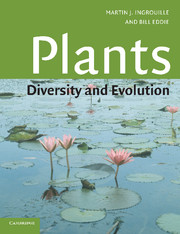Book contents
Chapter 7 - The fruits of the Earth
Published online by Cambridge University Press: 05 June 2012
Summary
But lo! men have become the tools of their tools. The man who independently plucked the fruits when he was hungry is become a farmer; and he stood under a tree for shelter, a housekeeper.
Henry David Thoreau, 1817–1862Exploiting plants
Human beings use thousands of species of plants for food, either as food or flavourings, for fuel, for construction materials and as sources of chemicals (oils, resins, gums, dyes, medicines and poisons). Almost all our calories and protein come either directly from plants or indirectly from plants used as food for our domesticated animals (the remainder comes from algae and fungi). All parts of plants have been directly exploited. Food has been obtained from the root (root-tubers, tap-roots), stem (tubers, rhizomes, and canes), leaf, flower (nectar and pollen in honey), seed and fruit. Wood, timber, fibres and other materials such as resins and latex have been obtained from roots, stems and leaves.
Humanity has always exploited plants but perhaps only for the past 10,000 years or 1% of human history have we cultivated them. Almost uniquely, human kind is a gardener, a cultivator. The first gardeners, in hunter–gatherer societies, were likely to have been women. They selected favoured plants, helped their cultivation and, in doing so, unconsciously changed the plants. The first cultivation of plants may have occurred in the Mesolithic period some time after 15,000 years ago. It was a time when the climate fluctuated rapidly.
- Type
- Chapter
- Information
- PlantsDiversity and Evolution, pp. 317 - 370Publisher: Cambridge University PressPrint publication year: 2006



